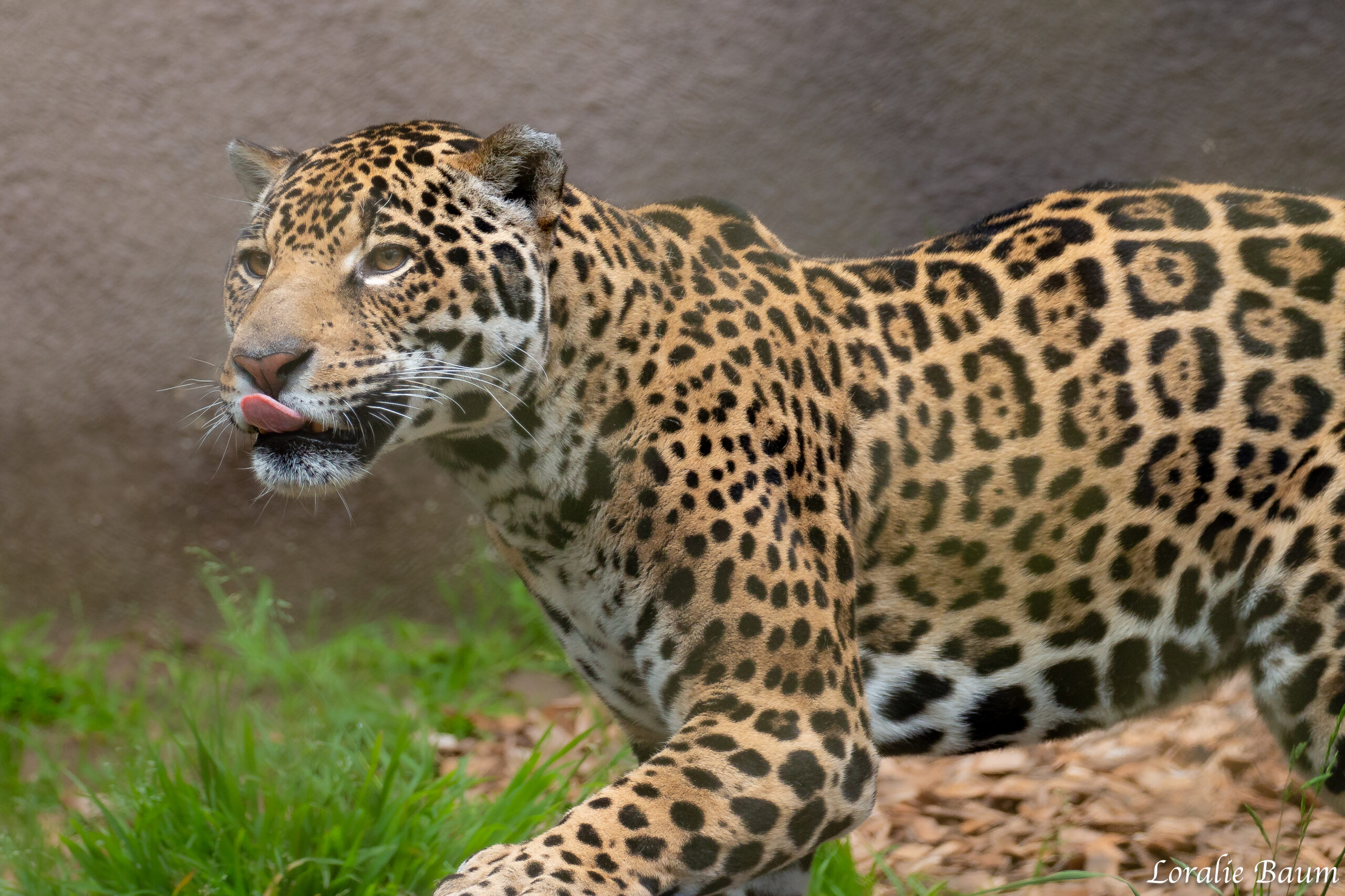Jaguar
Panthera onca

At the Zoo
You can find our jagura next to the Snow Leopard exhibit on the east side of the Lion House.
Fascinating Facts
-
Jaguars are formidable predators who are built for strength, not speed.
-
They will stalk and ambush prey, pouncing on it and delivering either a suffocating bite to the neck or a piercing bite to the skull, killing prey instantly.
-
They usually track prey on the ground, but can also climb trees to hunt and are excellent swimmers. Once they have subdued their prey they will drag the carcass to a secluded spot to feed.
-
Jaguars were important figures in many pre-Columbian indigenous cultures.
Physical Characteristics
Jaguars are the third largest cat in the world, and the largest cat in the Americas. They weigh between 150 – 300 lbs and are 5 – 6 feet in length, with males 10 – 20% larger than females. They vary in size over their large range, with the largest jaguars found in the Pantanal region of Brazil and the smallest in Honduras.
Their coat is pale yellow with black rosettes, although black or melanistic jaguars are somewhat common. Jaguars look similar to leopards, but have a stockier build and a squarer head.
Habitat/Diet
Jaguars can be found in forests, grasslands, scrublands and wetlands, but they favor dense jungle with cover for hunting. They prefer habitat near a water source.
They are carnivores and prefer larger prey such as deer, peccaries, tapirs, capybaras, caimans and giant anteaters.
Social Behavior
Breeding mostly coincides with the wet season, when prey is more plentiful. Females will call to attract a mate, and after a 91 – 111 day gestation period, 1- 4 cubs are born. The cubs are helpless at birth and the female will raise them on her own. They will be weaned between 5 – 6 months and become independent around two years. Jaguars can live 11 – 12 years in the wild and up to 20 under human care.
Jaguars communicate through vocalizations, scent-marking and scraping trees. They avoid humans and human activity. They are most active between dusk and dawn, although they can be active at any time of day.
Status In The Wild
The jaguar is listed as Near Threatened on the IUCN list and is on appendix I of CITES.
Jaguars are keystone species and are important in maintaining their ecosystem. Protections for jaguars result in protections for other, lesser known species. Jaguars are threatened by habitat destruction and fragmentation, being hunted for parts, and due to conflicts with ranchers.
What can you do to help jaguars?
- Don’t support illegal jaguar trade! Avoid purchasing anything made from jaguar pelts, teeth or bones.
- Support conservation efforts of organizations like WWF, and local AZA accredited zoos.
- Spread the word about jaguar conservation! Some notable groups: World Wildlife Fund Global, Chaco Jaguar Conservtion Project.
